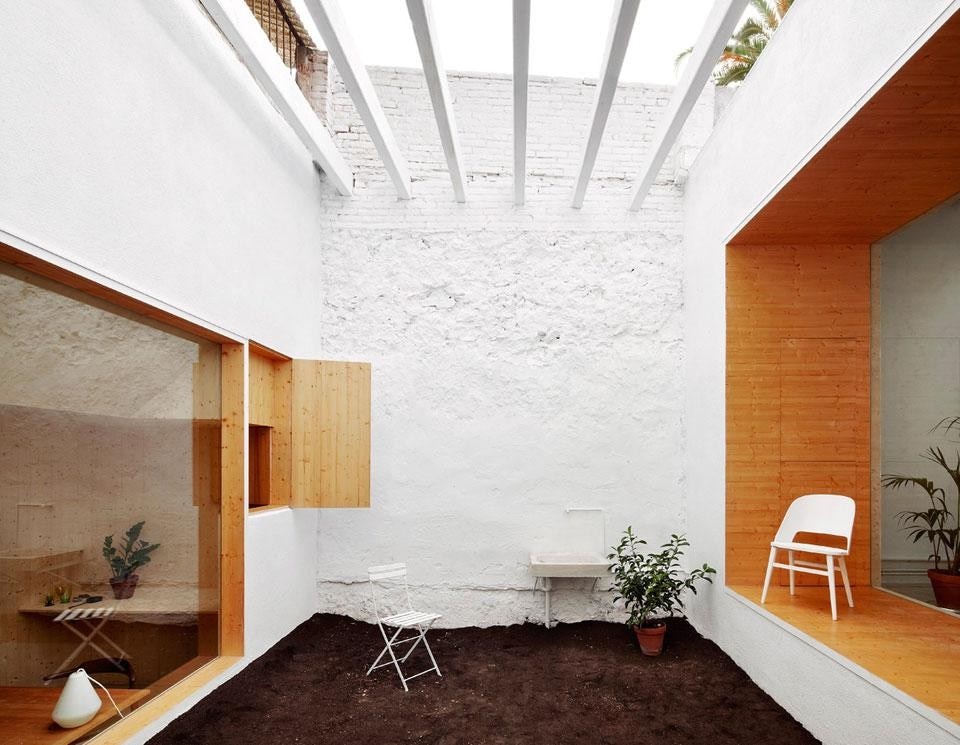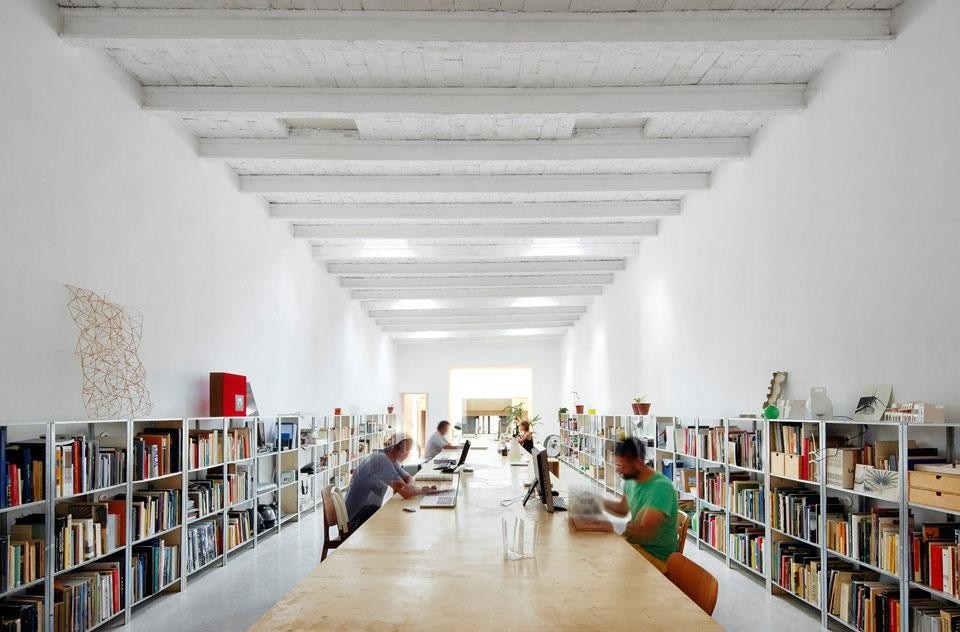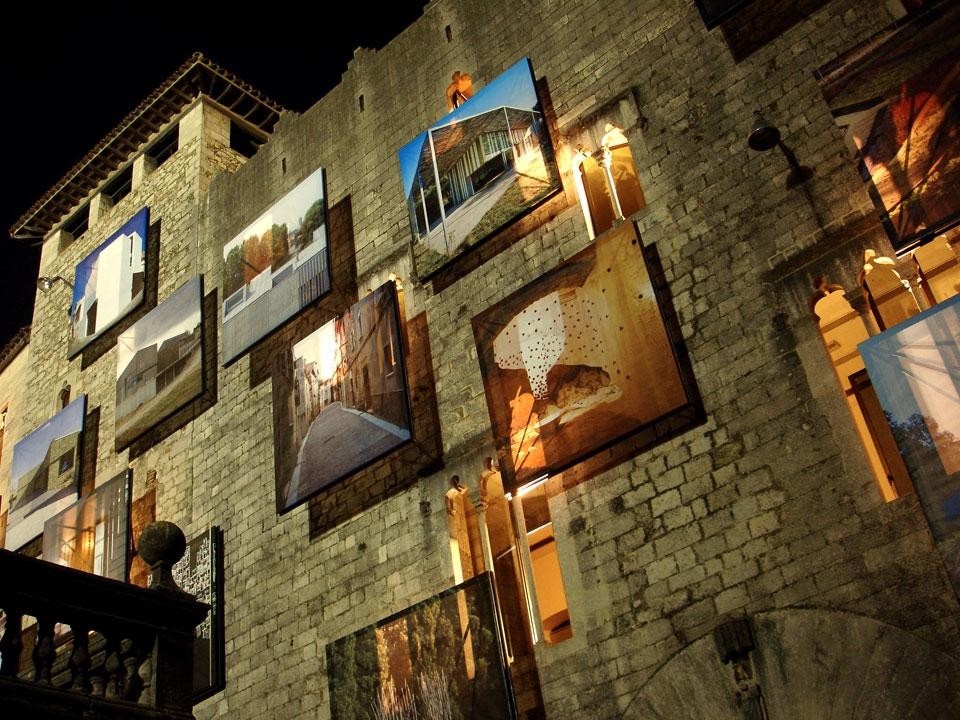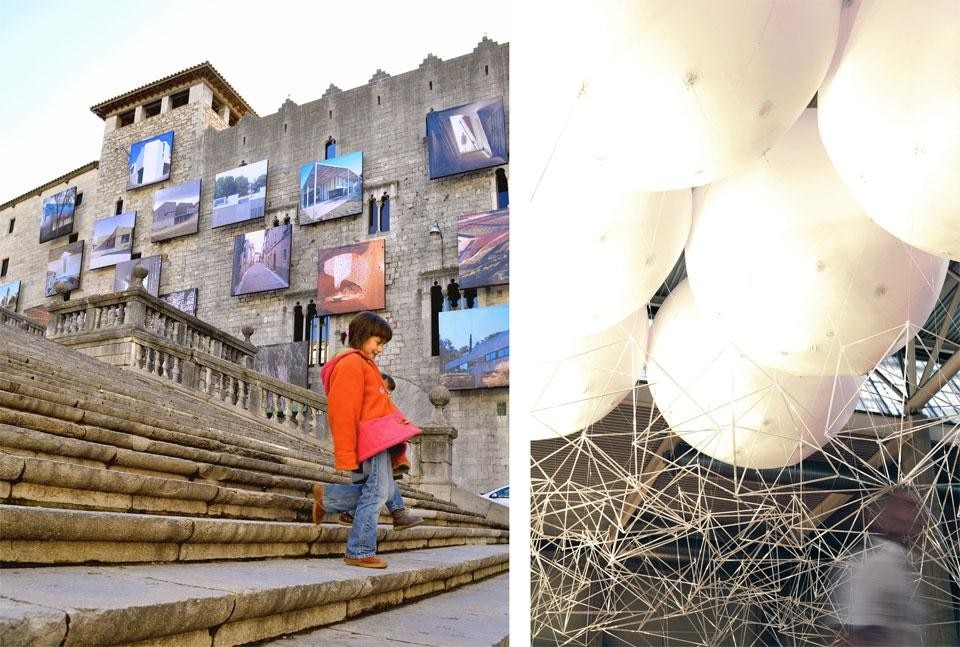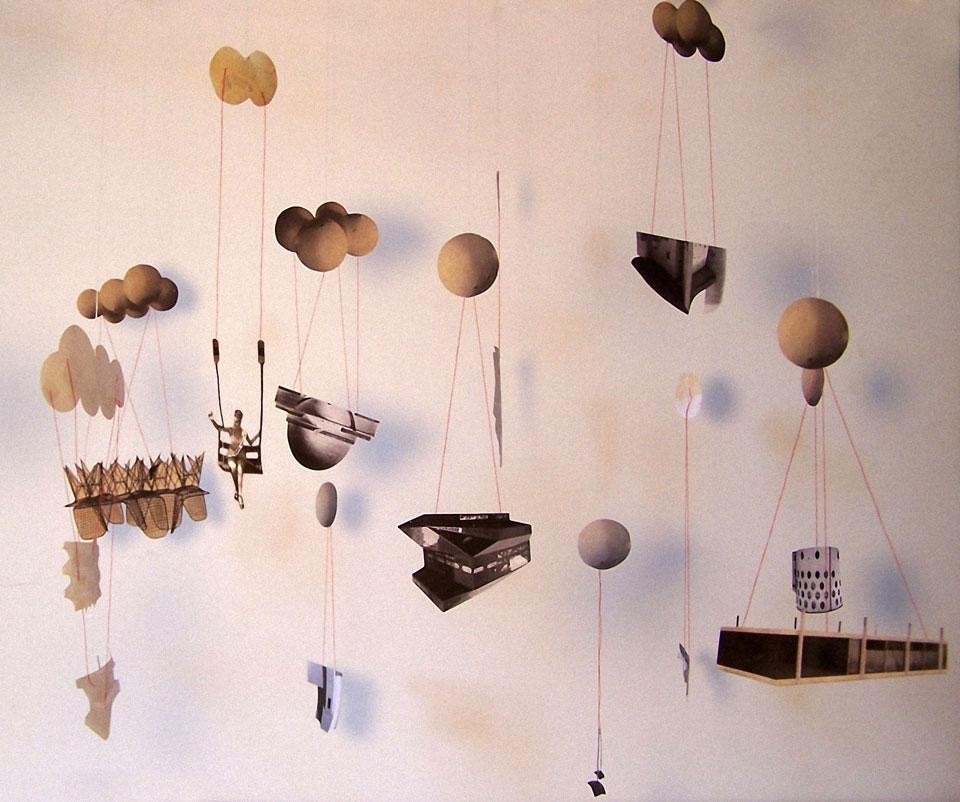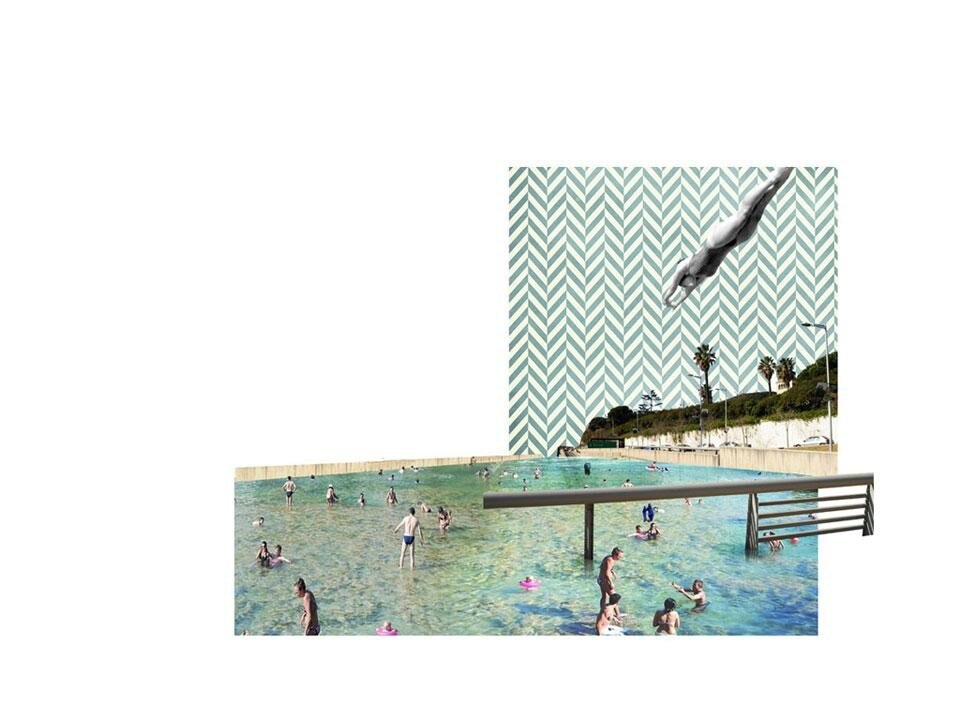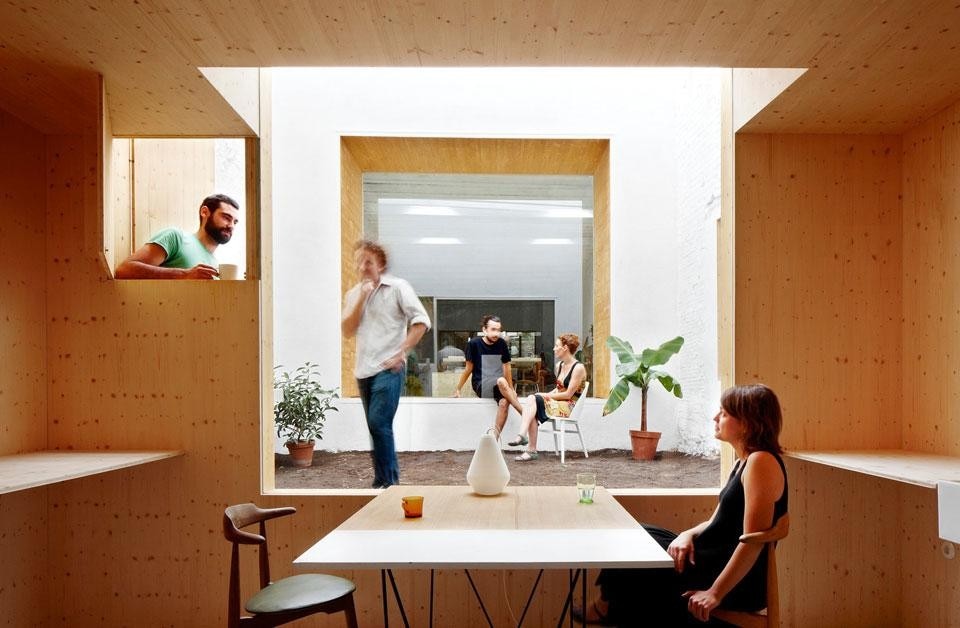At the height of the most ferocious financial and architectural crisis to have hit Spain in many years, one team of architects has embraced a non-stereotypical, versatile and courageous studio model. They have opened a new mixed work space, with a business model based on a direct relationship with companies in the sector, and a team that works collectively, carrying out new projects that do not only focus on construction. Swimming against the conservative tide of generalised austerity in Catalonia, this team thinks on a large scale, and its efforts are paying off.
The four members of the Maio team greet me in the large, elegant and beautiful space that they have recently opened in the Gràcia neighbourhood of Barcelona. It is divided into two sections. One of these, the working area, is dominated by its single central desk, which is 12,5 metres long, without any divisions or boundaries. This desk is shared by graphic designers, architects, data visualisation experts, video artists and anyone who the team can share experiences and collaborate with. "The people who come to work at our desk do so because we have a certain affinity. We are interested in them and they are interested in us", said Anna Puigjaner, one of the members of Maio, during my visit in mid-August.
The other area is a ground level room, scheduled to open in September, in which the various members of the space will commission architecture, art and design exhibitions, as well as laying on talks, discussions and other events. The idea is for this space to function as a meeting place, a venue for debate and contact, a place where people can chat over a beer.
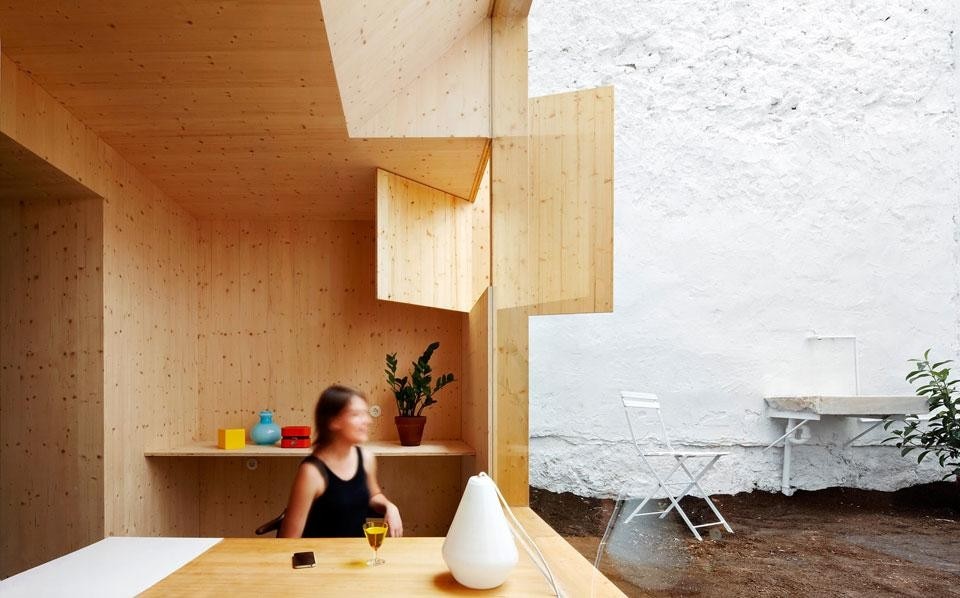
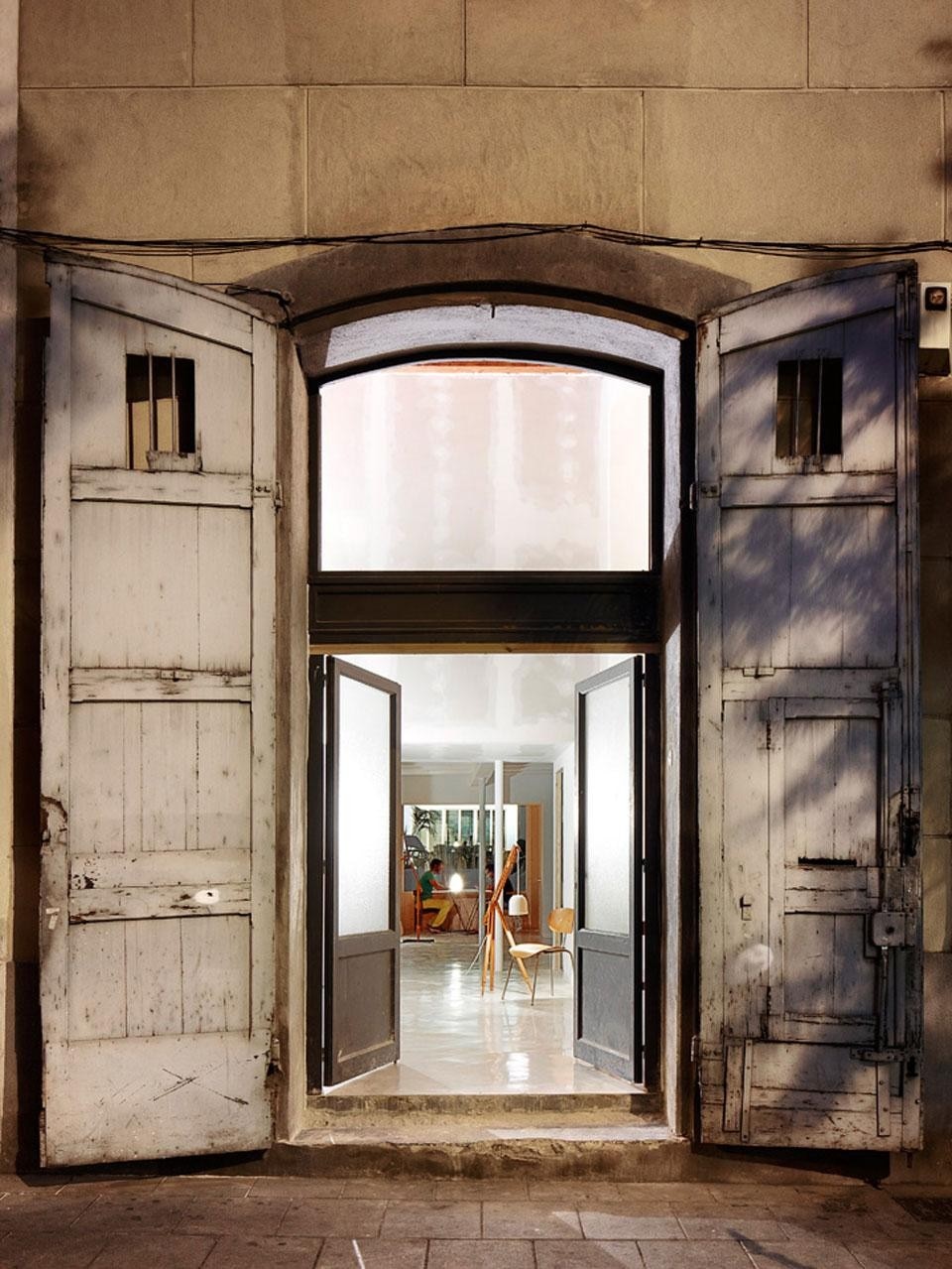
Their long desk is shared by graphic designers, architects, data visualisation experts, video artists and anyone who the team can share experiences and collaborate with
